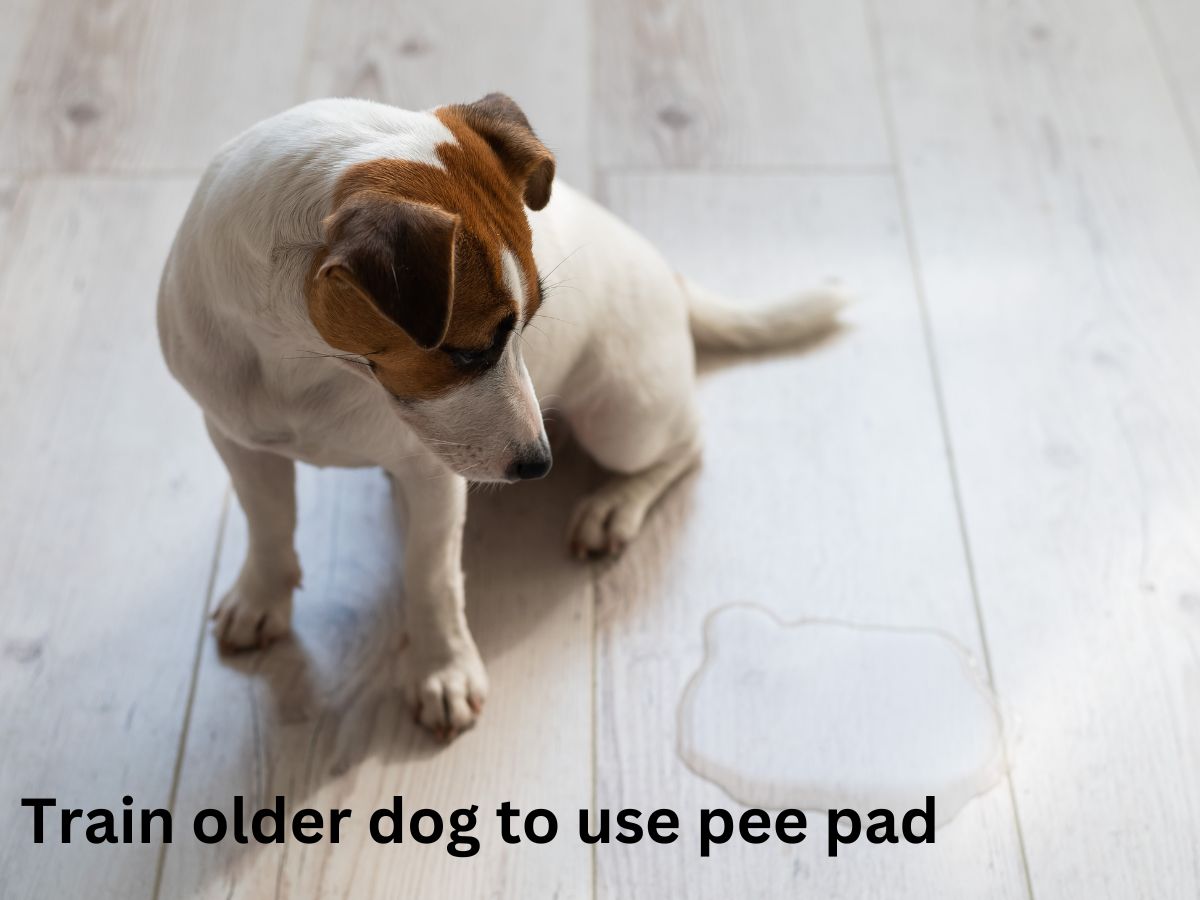Contents
- 0.0.0.0.1 How to train older dog to use a pee pad can be a bit challenging, but with patience and consistency, it’s entirely possible. Whether due to health reasons, moving to a new home, or lifestyle changes, older dogs can benefit from learning to use pee pads for indoor potty needs. This guide will help you understand the steps to train your older dog effectively while ensuring a positive experience for both you and your pet.
- 0.0.0.0.2
- 1 Why train older dog to use pee pad
- 1.0.0.0.1 Pee pads can be very helpful for older dogs, especially if they have health issues or mobility problems. As dogs age, they might struggle to go outside as easily as they used to. Joint pain, arthritis, or other health conditions can make it hard for them to get to the door in time. Pee pads offer a simple, indoor option that allows them to relieve themselves without stress.
- 1.0.0.0.2 For older dogs with bladder control problems, a pee pad can prevent accidents in the house. It also gives them a safe, familiar spot to go potty, which can make them feel more comfortable.
- 1.0.0.0.3 Pee pads are also useful if the weather is bad, such as during heavy rain or snow, when going outside isn’t practical for your senior dog. Overall, pee pads make life easier for both older dogs and their owners by providing a convenient solution for bathroom needs.
- 1.0.0.0.4
- 2 step-by-step guide to train an older dog to use a pee pad:
- 2.1 1.Pick a Spot
- 2.2
- 2.3 2.Introduce the Pee Pad
- 2.4
- 2.5 3.Set a Schedule
- 2.6
- 2.7 4.Use Commands
- 2.8
- 2.9 5.Praise and Reward
- 2.9.0.0.1 Whenever your dog successfully uses the pee pad, give them lots of praise or a small treat. Positive reinforcement makes your dog feel good about what they did, and they’ll want to do it again. Use a happy voice and make sure the reward happens right after they use the pad. This way, they understand that using the pee pad leads to something good, which will encourage them to keep doing it.
- 2.9.0.0.2
- 3 How to Choose the Right Pee Pad for an Older Dog
- 3.0.0.0.1 Choosing the right pee pad for your older dog is important to make sure they are comfortable and can use it easily. First, look for a pee pad that is **large enough** to give your dog plenty of space. Older dogs may have trouble aiming, so a bigger pad helps avoid messes.
- 3.0.0.0.2 Next, check the -absorbency of the pad. Some pads have extra layers to soak up more liquid and keep your dog’s paws dry. This is important for preventing leaks and keeping your home clean.
- 3.0.0.0.3 You should also consider – odor control . Many pads come with built-in odor protection to keep your house smelling fresh.
- 3.0.0.0.4 Non-slip pads are a good option, especially if your older dog has mobility issues. These pads stay in place and won’t slide around when your dog steps on them.
- 3.0.0.0.5 Finally, think about the environment. You can choose **eco-friendly pee pads** made from sustainable materials, which are better for the planet. Picking the right pee pad makes potty time easier for both you and your older dog!
- 3.0.0.0.6
- 3.1 How to Use Pee Pads for Senior Dogs with Medical Issues
- 3.1.0.0.1 For senior dogs with medical problems like arthritis, joint pain, or bladder issues, pee pads offer an easy solution. These dogs may have trouble walking or holding their bladder, making outdoor trips difficult. Place the pee pad in a spot that’s easy for your dog to reach, especially if they struggle with mobility. You may want to choose a **non-slip pee pad** to ensure your dog doesn’t slip while using it.
- 3.1.0.0.2 Make sure the pad is large enough and highly absorbent to avoid leaks. Reward your dog with praise or treats when they successfully use the pad. Pee pads reduce stress for senior dogs with medical issues, helping them feel more comfortable while managing their health.
- 3.1.0.0.3
- 3.2 How to Help My Dog Transition from Outdoor to Indoor Potty Training
- 3.2.0.0.1
- 3.2.0.0.2 If your senior dog is used to going outside, transitioning to indoor potty training with pee pads takes time and patience. Start by placing a pee pad near the door where your dog normally goes out. Over time, move the pad further inside to a spot you want them to use permanently.
- 3.2.0.0.3 Use the same commands like “Go potty” when guiding your dog to the pee pad, just as you did for outdoor potty breaks. Reward them with treats and praise when they use the pad successfully. Be consistent with the schedule, and don’t get discouraged if it takes a little longer for older dogs to adjust.
- 3.2.0.0.4
- 3.3 How to Use Multiple Pee Pads for Large Dogs
- 3.3.0.0.1
- 3.3.0.0.2 Large dogs may need extra space to feel comfortable when using a pee pad. To help, place **multiple pee pads** side by side, creating a bigger area for your dog. This helps if your dog has trouble aiming or needs more room to move around. You can also tape the pads down to keep them from shifting when your dog walks on them.
- 3.3.0.0.3 Choose **extra absorbent pads** that are designed for large breeds to avoid leaks and keep your floor clean. Be sure to praise your dog when they use the pads, so they understand that this is the right place to go. Multiple pee pads give large dogs the space they need while keeping the area mess-free.
- 3.3.0.0.4
- 3.4 Common Problems and Solutions for Older Dogs Using Pee Pads
- 3.4.1 1.Dog Missing the Pad
- 3.4.2
- 3.4.3 2.Dog Chewing the Pad
- 3.4.4
- 3.4.5 3.Dog Ignoring the Pad
- 3.4.5.0.1 If your dog is ignoring the pad, try using one with a **scent attractant** that encourages your dog to go potty there. You can also place the pad in a spot where your dog often has accidents. If necessary, bring your dog to the pad after they eat, drink, or wake up, and use commands like “Go potty” to reinforce the behavior.
- 3.4.5.0.2
- 3.5 How do you attract a dog to a pee pad
- 3.5.0.0.1 To attract a dog to a pee pad, start by placing the pad in a quiet, familiar area where your dog feels comfortable. This could be near where your dog usually relieves itself or in a spot that’s easy for them to access.
- 3.5.0.0.2 Next, encourage your dog to sniff the pad. Dogs naturally explore new things with their noses, so you can gently guide them to the pee pad and let them smell it. You can also put a small amount of your dog’s urine on the pad, which will make the area smell familiar and encourage them to use it.
- 3.5.0.0.3 To further attract your dog, consider using a pee pad with a built-in attractant. These pads have special scents that appeal to dogs, helping them understand that it’s okay to relieve themselves there.
- 3.5.0.0.4 Reward your dog with praise and treats when they use the pad correctly. Positive reinforcement helps your dog learn faster and makes the training experience enjoyable for them.
- 3.5.0.0.5 Be patient and consistent. If your dog has accidents, gently redirect them to the pad without scolding. With time and practice, your dog will learn to use the pee pad on their own.
- 3.5.0.0.6
- 4 Frequently Asked Questions (FAQ)
- 5 Conclusion:

